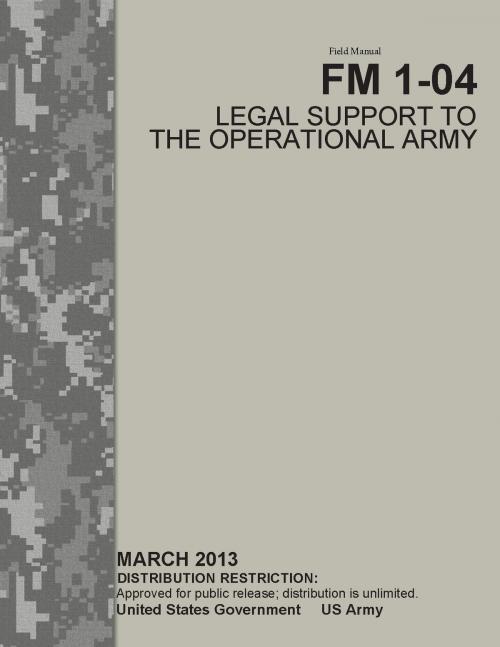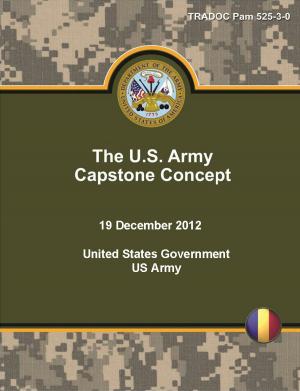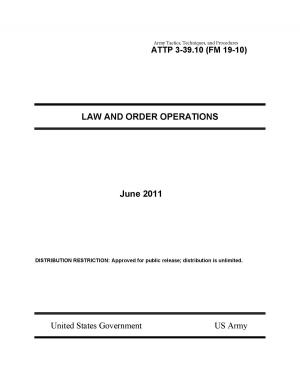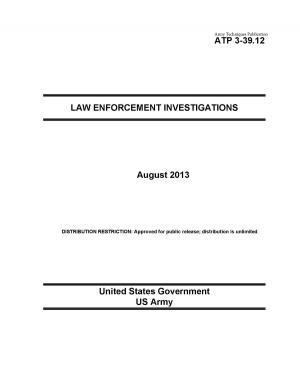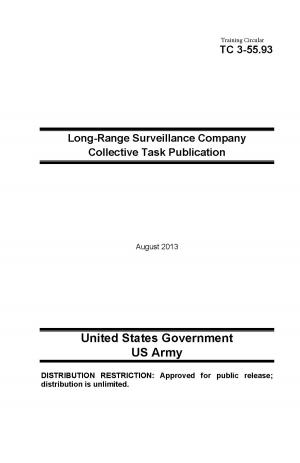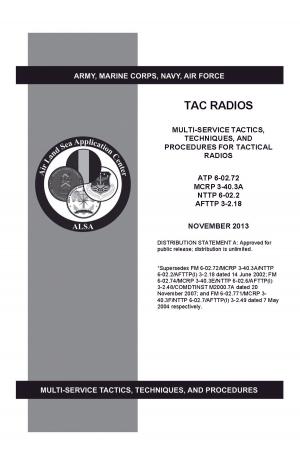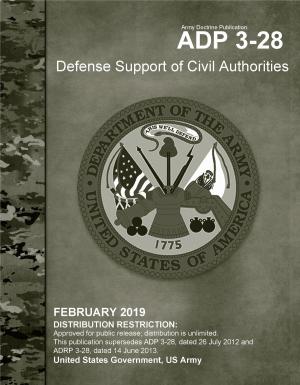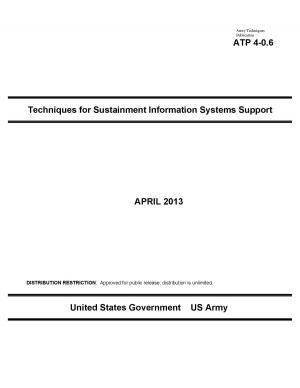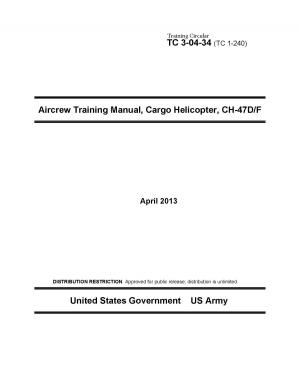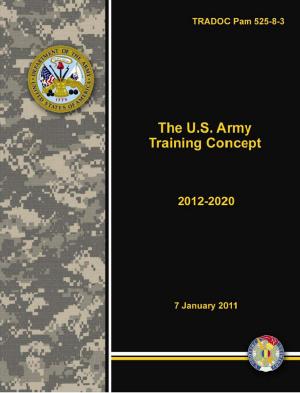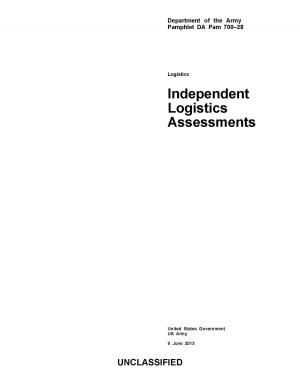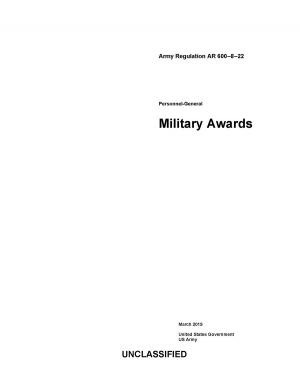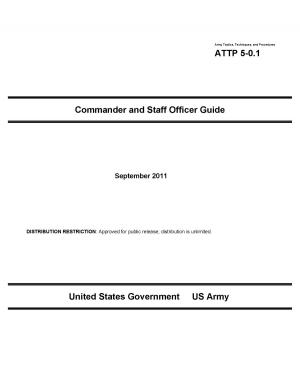Field Manual FM 1-04 Legal Support to the Operational Army March 2013
Nonfiction, Reference & Language, Law, Military, Reference, Guides & Handbooks| Author: | United States Government US Army | ISBN: | 1230000118998 |
| Publisher: | eBook Publishing Team | Publication: | April 3, 2013 |
| Imprint: | Language: | English |
| Author: | United States Government US Army |
| ISBN: | 1230000118998 |
| Publisher: | eBook Publishing Team |
| Publication: | April 3, 2013 |
| Imprint: | |
| Language: | English |
FM 1-04, Legal Support to the Operational Army, is the Army’s manual for operational legal doctrine. This manual provides authoritative doctrine and practical guidance for commanders, judge advocates, legal administrators, and paralegal Soldiers across the spectrum of conflict. It outlines how The Judge Advocate General’s Corps (JAGC) will be organized in accordance with the Army’s modular force design. It also discusses the delivery of legal support to the modular force.
This edition of FM 1-04 provides doctrine on legal support across the range of operations and the provision of legal support in specific types or aspects of operations. The appendixes describe newly created legal structure in the Army’s Reserve Component and the format to capture lessons learned.
Chapter 1 provides an overview of legal support to operations. This chapter discusses the evolution of operational law and introduces the various roles that JAGC Soldiers perform in support of operations.
Chapter 2 discusses certain fundamental concepts of Army doctrine. It introduces a foundation of unified land operations and decisive action as well as operational themes, the warfighting functions, and the operations process. This chapter concludes with discussions of working groups and running estimates.
Chapter 3 discusses the requirements for legal support across the modular force as a result of transformation. It describes where JAGC Soldiers are assigned throughout the modular force. It concludes with a description of necessary materiel requirements to provide legal support.
Chapter 4 describes the roles, responsibilities, and working relationships of JAGC organizations and personnel assigned to the operating force. This chapter outlines the doctrinal missions of legal sections and offices at various levels of command. It also describes the working relationships between brigade legal sections and the division Office of the Staff Judge Advocate (OSJA), and the OSJA with the trial defense service. This chapter concludes with a discussion of other JAGC organizational support and personnel integration to support training JAGC personnel assigned to the operational force.
Chapter 5 describes the six core legal disciplines of military justice, international and operational law, administrative and civil law, contract and fiscal law, claims, and legal assistance.
Chapter 6 provides an introduction to the basics of planning and the role of judge advocates in this process. Descriptions of design and the military decision-making process are included.
Chapter 7 discusses rules of engagement, rules for the use of force, and targeting.
Chapter 8 discusses detainee operations.
Chapter 9 discusses legal support to stability operations.
Chapter 10 discusses legal considerations in rule of law activities.
Chapter 11 discusses legal support in civil affairs units.
Chapter 12 provides a synopsis of legal issues in defense support of civil authorities operations.
Chapter 13 discusses financial management and deployment contracting.
Chapter 14 discusses legal support to Army special operations forces.
Chapter 15 discusses security force assistance operations and legal support to these missions.
Three appendixes supplement the chapters of this manual. Appendix A describes the newly created Army Reserve Legal Command and the organization of legal support. Appendix B describes the legal structure within the National Guard. A format for judge advocates to capture lessons learned during deployments is contained in appendix C.
This version of FM 1-04 replaces the January 2012 version.
FM 1-04, Legal Support to the Operational Army, is the Army’s manual for operational legal doctrine. This manual provides authoritative doctrine and practical guidance for commanders, judge advocates, legal administrators, and paralegal Soldiers across the spectrum of conflict. It outlines how The Judge Advocate General’s Corps (JAGC) will be organized in accordance with the Army’s modular force design. It also discusses the delivery of legal support to the modular force.
This edition of FM 1-04 provides doctrine on legal support across the range of operations and the provision of legal support in specific types or aspects of operations. The appendixes describe newly created legal structure in the Army’s Reserve Component and the format to capture lessons learned.
Chapter 1 provides an overview of legal support to operations. This chapter discusses the evolution of operational law and introduces the various roles that JAGC Soldiers perform in support of operations.
Chapter 2 discusses certain fundamental concepts of Army doctrine. It introduces a foundation of unified land operations and decisive action as well as operational themes, the warfighting functions, and the operations process. This chapter concludes with discussions of working groups and running estimates.
Chapter 3 discusses the requirements for legal support across the modular force as a result of transformation. It describes where JAGC Soldiers are assigned throughout the modular force. It concludes with a description of necessary materiel requirements to provide legal support.
Chapter 4 describes the roles, responsibilities, and working relationships of JAGC organizations and personnel assigned to the operating force. This chapter outlines the doctrinal missions of legal sections and offices at various levels of command. It also describes the working relationships between brigade legal sections and the division Office of the Staff Judge Advocate (OSJA), and the OSJA with the trial defense service. This chapter concludes with a discussion of other JAGC organizational support and personnel integration to support training JAGC personnel assigned to the operational force.
Chapter 5 describes the six core legal disciplines of military justice, international and operational law, administrative and civil law, contract and fiscal law, claims, and legal assistance.
Chapter 6 provides an introduction to the basics of planning and the role of judge advocates in this process. Descriptions of design and the military decision-making process are included.
Chapter 7 discusses rules of engagement, rules for the use of force, and targeting.
Chapter 8 discusses detainee operations.
Chapter 9 discusses legal support to stability operations.
Chapter 10 discusses legal considerations in rule of law activities.
Chapter 11 discusses legal support in civil affairs units.
Chapter 12 provides a synopsis of legal issues in defense support of civil authorities operations.
Chapter 13 discusses financial management and deployment contracting.
Chapter 14 discusses legal support to Army special operations forces.
Chapter 15 discusses security force assistance operations and legal support to these missions.
Three appendixes supplement the chapters of this manual. Appendix A describes the newly created Army Reserve Legal Command and the organization of legal support. Appendix B describes the legal structure within the National Guard. A format for judge advocates to capture lessons learned during deployments is contained in appendix C.
This version of FM 1-04 replaces the January 2012 version.
